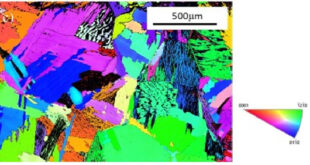Significance Statement
Previous numerical research studying condensing flow in microchannels focused mainly on heat transfer with little efforts made on pressure gradients. A better understanding of pressure drop characteristics coupled with heat transfer would provide better information on condensation process and design of efficient heat exchangers.
Research led by Professor Wei Li and Dr. Jingzhi Zhang from Zhejiang University and in collaboration with Professor S.A. Sherif from University of Florida carried out numerical investigations with effects of mass flux, vapor quality and aspect ratio on heat transfer and pressure drop characteristics for R410A and R134a refrigerants inside a horizontal flattened tubes deformed from round tubes with an inner diameter of 3.78mm. This research was implemented to improve understanding on condensation process in flattened tubes by using numerical approaches. The work appeared in the peer-reviewed journal, International Journal of Thermal Sciences.
Heat transfer coefficient for R134a was higher in range of 10-32% than R410A at similar mass flux and vapor quality due to difference in properties of the two refrigerants. The flattened tube was found to enhance heat transfer coefficients especially at higher mass flux and vapor quality values when compared with round tubes but decreases as vapor quality decreases.
Researchers’ numerical results on heat transfer coefficients of flattened tubes when compared with previous empirical heat transfer correlations for round tubes by using hydraulic diameter showed reasonable agreement for both refrigerants.
Liquid film thickness of the two refrigerants decreased with an increase in aspect ratio, mass flux and vapor quality aiding heat transfer for flattened tubes. A thinner film thickness for R134a was observed due to higher shear and surface tension force. The average thin film thickness is 10% lower for flattened tube than round tubes at a vapor quality of 0.8.
When the authors looked at stream traces for round and flattened tubes for refrigerants R410A and R134a a more significant gravity effect was observed in round tubes with the same cross-sectional perimeter compared with flattened tubes. The stream trace started from the vapor phase leading to the liquid-vapor interface where vapor condenses to liquid. The movement of vapor phase from the core region to wall region also enhanced heat transfer. The liquid phase at the bottom of liquid film region thickened the liquid film at tube corners.
Pressure gradients of the two tubes increase with the value of vapor quality less than 0.8 but decreases at a higher vapor quality. It was also found to increase with mass flux. Pressure gradients for flattened tubes increased with an increase in aspect ratio, and gets larger with increase in mass flux and vapor quality for R410A. Frictional pressure drop for R134a was much higher than R410A at the same mass flux due to higher working fluid velocity.
The numerical data results of pressure gradients when compared with previous empirical correlations obtained a best prediction of mean absolute deviation and mean relative deviation of 16.34% and approximately 3.83% respectively when using equivalent diameter.
The numerical approach used in this study gives a better understanding for condensation process in flattened tubes thereby pointing out its advantages.
Journal Reference
Jingzhi Zhang1, 2, Wei Li1, S.A. Sherif3. A numerical study of condensation heat transfer and pressure drop in horizontal round and flattened minichannels, International Journal of Thermal Sciences 106 (2016) 80-93.
[expand title=”Show Affiliations”]- Department of Energy Engineering, Zhejiang University, 38 Zheda Road, Hangzhou, 30027 Zhejiang, China
- Department of Energy Engineering, Co-Innovation Center for Advanced Aero-Engine, Zhejiang University, 38 Zheda Road, Hangzhou, 30027 Zhejiang, China.
- Department of Mechanical and Aerospace Engineering, University of Florida, 232 MAE Bldg. B, P.O. Box 116300, Gainesville, FL 32611, USA.
Go To International Journal of Thermal Sciences
 Advances in Engineering Advances in Engineering features breaking research judged by Advances in Engineering advisory team to be of key importance in the Engineering field. Papers are selected from over 10,000 published each week from most peer reviewed journals.
Advances in Engineering Advances in Engineering features breaking research judged by Advances in Engineering advisory team to be of key importance in the Engineering field. Papers are selected from over 10,000 published each week from most peer reviewed journals.




